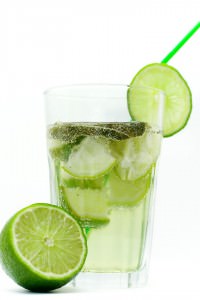What are You and Your “Non-Drinking” Patrons Doing for Each Other?
Only about half of Americans are “regular” drinkers today, and another eleven percent drink but only infrequently. In this case, “regular” is defined as twelve drinks per year or more, and “infrequent” means less than twelve.
Twelve drinks is only one drink per month on average. What this means is that even among the half of the population that drinks what can be defined as “regularly,” some of those folks are actually ordering very little alcohol.
Nonetheless, bars are great places to socialize and are central gathering spots where people get together to celebrate birthdays or simply catch up with friends. With so many other things vying for people’s time, however, once a group of friends has had a chance to talk a little, those among them who don’t do much drinking may be ready to call it a night. The company may hold their interest, but how many diet soft drinks can one person drink in one sitting, and, more importantly, how much profit is this making you?
Sugar, Sugar Everywhere, and Not a Drop Worth Drinking
There are many different reasons for being a so-called teetotaler, but health is certainly one of them, and most bars don’t exactly offer the healthiest beverage options. Once the “virgin” cocktail and soft drink options are exhausted, what’s left includes cranberry “juice,” which generally contains high fructose corn syrup, and orange juice, which still contains more sugar, albeit naturally occurring, than the health-conscious patron desires without seeming to offer much else besides vitamin C in return. Even if you keep decent tea and freshly-brewed coffee around, a lot of people swear off caffeine past morning hours, so you may be left with half of your patrons chatting up a storm but hard-pressed to think of anything on your menu worth spending money on.
Healthier Options
“Drinkers” tend to look forward to enjoying what they order, while non-drinkers feel stuck with looking for something they can tolerate. Unless they’re really thirsty, they may feel that they aren’t “getting anything” out of the limited beverage choices on the menu.
If you think past basic juices like orange, cranberry, grapefruit, and apple, however, you’ll realize that variations like pomegranate and açai, while also being high in naturally occurring sugars, have become increasingly popular in recent years due to the health-boosting antioxidants they are also said to contain. As a bar and not a health food store, the question of whether they do in fact contain healthier ingredients than orange juice is of less concern to you than whether people will want to order them, and apparently they do. Kombucha is another drink that may appeal to patrons looking to get their “health buzz” on for the evening, as are beverages containing real ginger, such as ginger beer.
Spritzers, Etc.: Another Clear Menu Choice
If keeping a variety of juices beyond standard cocktail ingredients seem like too big of a risk, there are other ways to go, too. Just offering patrons an interesting, unique, and more classy alternative to soft drinks will make your menu of nonalcoholic options stand out as well. Well-made traditional thirst-quenchers like iced tea and lemonade are good choices, and changing things up with alternatives like Moroccan mint iced tea or limeade can help make these beverages memorable for non-drinkers. Spritzers that simply combine sparkling water with a simple syrup (basil-lime, for instance) can be finished off with whatever appropriate twist you have on hand (such as a sprig of mint). Don’t leave it up to patrons to ask what you can scrounge up; put these in a special section of the menu highlighting nonalcoholic choices.
Remember, people don’t just come to bars to drink alcohol. They come to socialize – and maybe that’s all they want, but you’re not making a dime from all the talking and laughing if it’s not interspersed with some drinking. If half the population doesn’t drink much alcohol, then that’s an untapped demographic that could be earning you profits some other way, so don’t ignore them. If you put your mind to it, the nonalcoholic drinks that you serve change from a glass “half empty” to a glass completely full of possibility – for you and your patrons alike.
- Uncorkd Adds New Vendor Purchasing, Tracking and Reporting Functionality - February 13, 2018
- Uncorkd Adds New Inventory Management Functionality with POS Integration - July 24, 2017
- How Many Red or White Wines Should You Have on Your List - May 3, 2016


